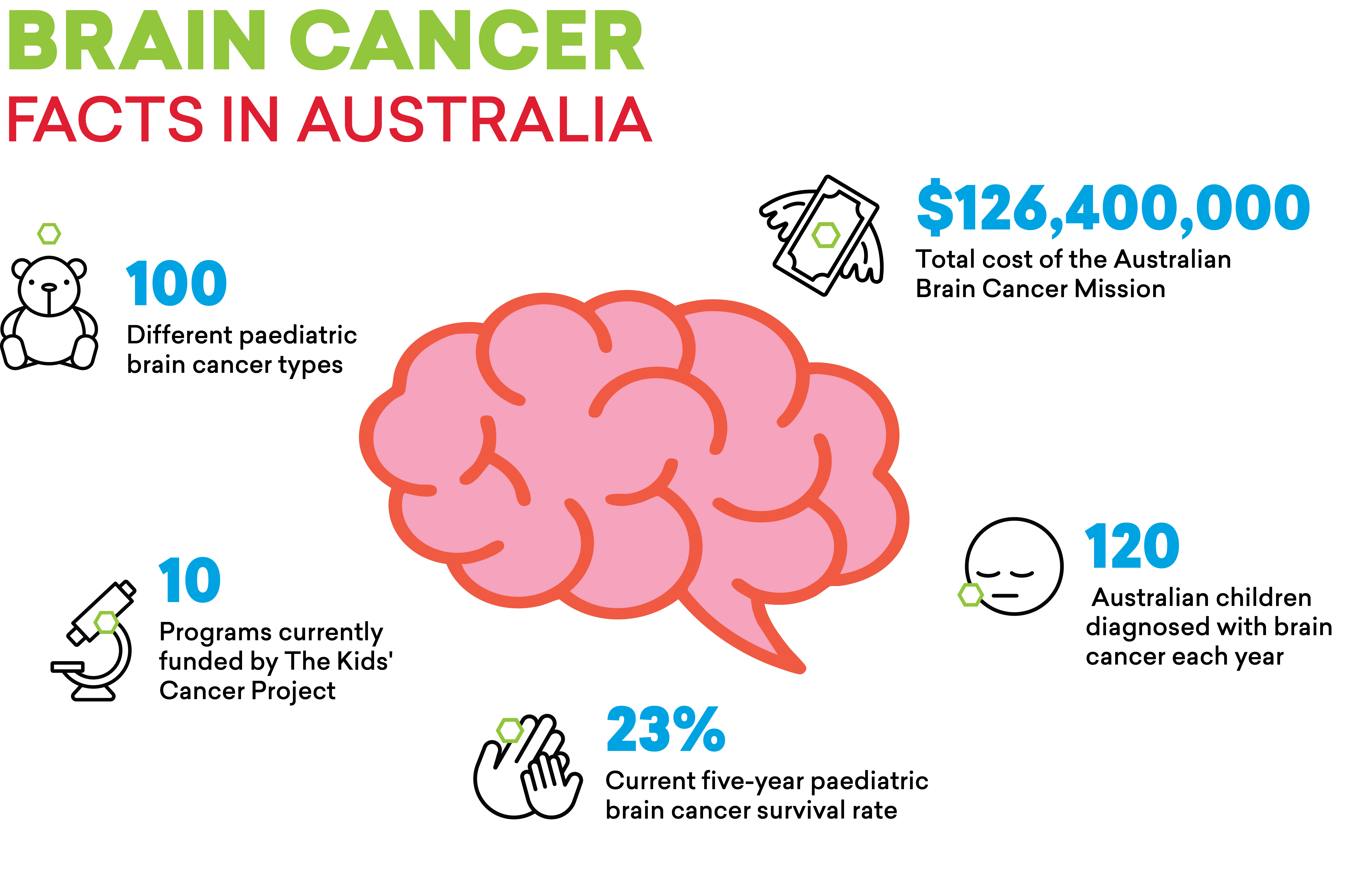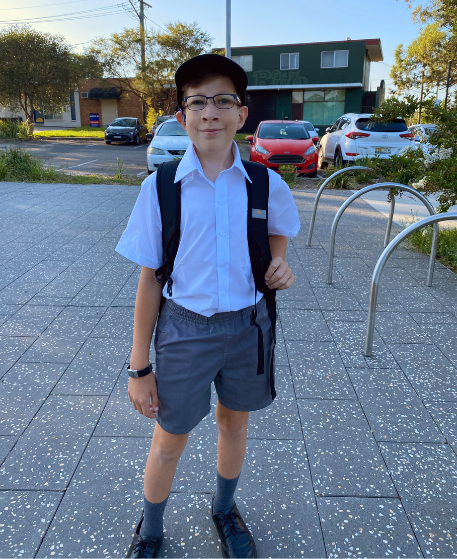
May is Brain Cancer Awareness Month. Recognised as the world’s deadliest paediatric cancer, it can often be a ruthless, tragic disease.
This article aims to raise awareness and understanding about brain cancer, and how The Kids’ Cancer Project is aiming to ensure a 100% survival rate with no long-lasting side effects from treatment.
Five numbers tell the story of childhood brain cancer. We speak about each of them below.
100
There are approximately 100 different childhood brain cancer types. They range from where they are located in the brain, their genetic profile and when they begin to develop, but the most common malignant paediatric brain cancers are the following:
Medulloblastoma
Diffuse midline gliomas
High-grade gliomas
Ependymomas
Atypical Teratoid/Rhabdoid Tumours (AT/RT)
Brain cancers are very difficult to treat and quite often require high doses of chemotherapy to penetrate the cancer, often leaving long-lasting side effects. One brain cancer, Diffuse Intrinsic Pontine Glioma (DIPG), is particularly resistant because it doesn't respond to chemotherapy or radiation and is unable to be removed via surgery.
Symptoms of brain cancer include persistent headaches, nausea, vision or hearing problems, coordination issues, seizures, cognitive changes, weakness, numbness and fatigue.
120
Approximately 120 children are diagnosed with brain cancer each year. While this number seems small, the toll it takes on these children and their families is enormous. Treatment is exhaustive and recovery can take years, if not decades.
Brain cancer detection comes in many forms, including neurological examination, imaging tests like MRIs or CT scans, biopsy, molecular and genetic testing and lumbar puncture.

23%
The five-year survival rate of paediatric brain cancer patients. It means that 1 in 4 children survive brain cancer. Brain cancers do vary in survival rates. For example, medulloblastoma has a 70% survival rate, while DIPG tragically has a 2% five-year survival rate.
While medulloblastoma does have quite a high survival rate, many former patients that enter survivorship after often left with long-lasting side-effects. 13-year-old Fred Corbett, our 2025 Pirate Day ambassador, deals with moderate to severe hearing loss, cognitive impairments and complex endocrine deficiencies in the wake of his treatment.
10
The Kids’ Cancer Project is currently funding ten childhood brain cancer research projects, in a bid to increase survival rates and reduce the harmful effects of current treatments.
Five of our 23 Col Reynolds Fellows are brain cancer researchers, with each complementing one of our four research pillars and assessing different brain cancers.
Dr Ryan Cross, based at WEHI, is a Col Reynolds Fellow currently researching DIPG.
A DIPG tumour wraps around the part of the brain that controls a child’s motor function. It’s completely inoperable, and being a stiff solid piece of tissue, it’s difficult for drugs to penetrate and treat.
Dr Cross hopes to turn the aggressive cancer into a manageable condition via providing effective, safe and personalised treatments to kids with the disease.
“What I'm working on is a living cell therapy which will be able to get into the nooks and crannies of all the different tissues and find these cells specifically to hunt them out and kill them,” he says.
“I’m quite optimistic that the field and therapies I’m working on do have the potential to change lives long term.”
$126,400,000
The sum of money allocated to the Australian Brain Cancer Mission.
The ABCM aims to double the survival rates and improve the quality of life of patients with brain cancer. Co-founded by a number of esteemed charities and foundations, The Kids’ Cancer Project allocated $5.3 million to the mission to ensure its viability.
The Kids’ Cancer Project is raising money for vital brain cancer research on Pirate Day, this 16 May. Schools, ELCs and businesses are encouraged to sign up, dress up like a pirate and collect buried treasure as we chart a course for a world without brain cancer.
It’s an incredible day on the high seas underpinned by the need to change the landscape of this tragic disease.
To sign up you and your crew for this year’s edition of Pirate Day, hit the button below.
